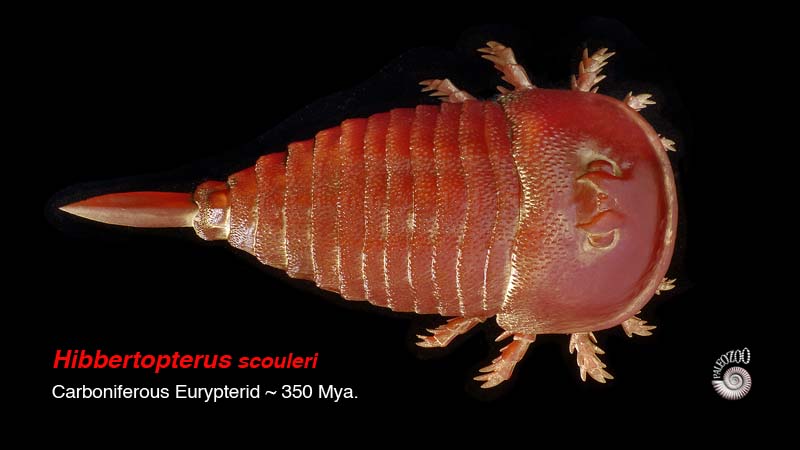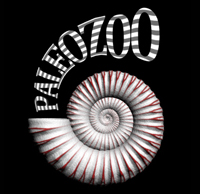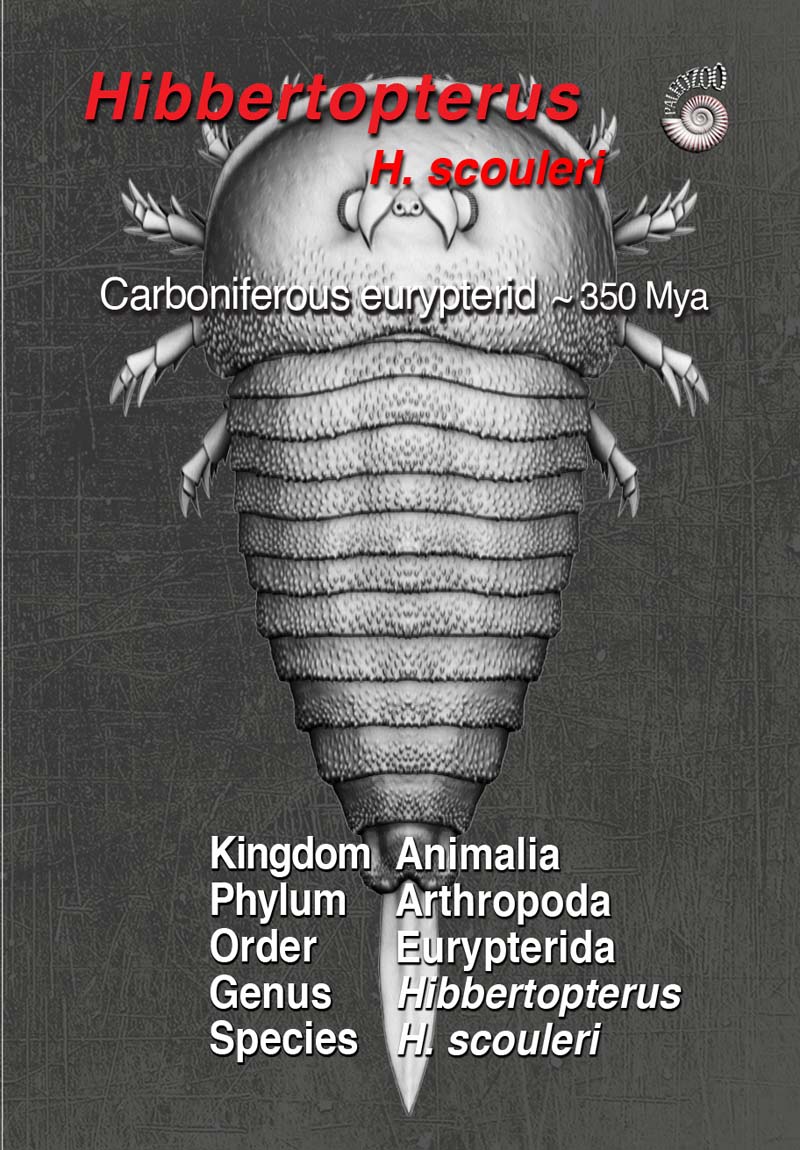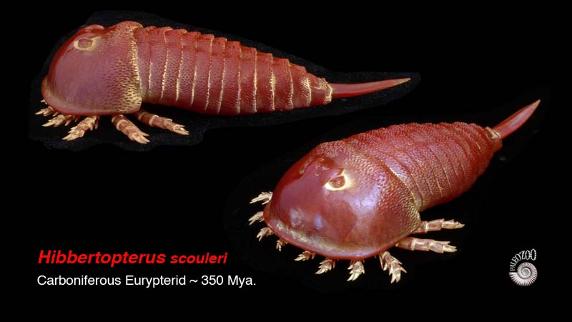Hibbertopterus scouleri is a genus of extinct eurypterid -commonly known as sea scorpions. It lived during the Late Devonian and Early Carboniferous periods, approximately 350 million years ago and was among the largest arthropods to have ever existed, with some species reaching lengths of over two meters.
Hibbertopterus had an unusually broad body comprised of a segmented exoskeleton ending in a pointed telson.
Eurypterids were largely aquatic predators but some like Hibbertopterus are also thought to have been able to move onto land. Though very large, Hibbertopterus is not thought to have been an active predator but instead fed via a method called sweep-feeding - using its specialised forward-facing limbs equipped with spines, to rake through the substrate in search of small invertebrates.
Though long hypothesised, the fact that eurypterids were capable of terrestrial locomotion was definitely proven through the discovery of a fossil trackway made by Hibbertopterus in Scotland.

The trackway showed that an animal measuring around 160 centimetres had slowly lumbered across a stretch of land, dragging its telson across the ground after it. How Hibbertopterus could survive on land is unknown but it might have been possible through either its gills being able to function in air as long as they were wet or by the animal possessing a dual respiratory system.







